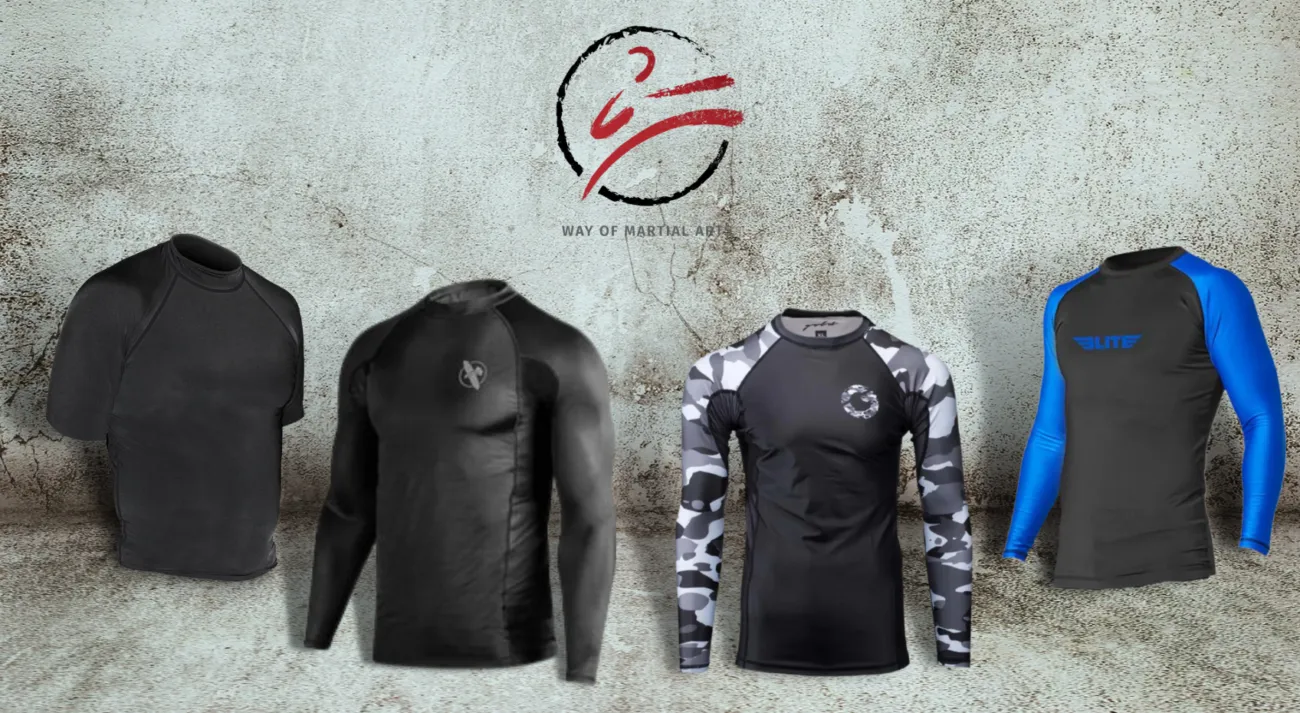Brazilian jiu-jitsu was the most outstanding martial art on the floor until the fighters started understanding control positions. Royce Gracie, Tony Ferguson, Charles Oliveira, and many other world-class finishers finished their opponents in mixed martial arts despite being battered and bruised for two rounds!
The opponent’s neck is the weakest spot for a reason. When you trap the opponent’s limb or the opponent’s body, he might choose to let you break it.
But trapping the opponent’s head is a whole different thing. If you want to play Superman with the enemy’s hands around your neck, you’re going to pass out and the referee will have to stop the fight because you’re out cold! When you don’t want to tap against jiu-jitsu God, your limbs will go limp after around 9 seconds!
But first of all, if you’re serious about Brazilian jiu-jitsu, then you need to know that having the best BJJ gear is just as crucial as knowing the best chokes to finish your opponent. Check out our article on the BJJ Gi Brand and get ready to train harder, fight stronger, and be unbeatable.
The Most Often BJJ Techniques In An MMA Fight
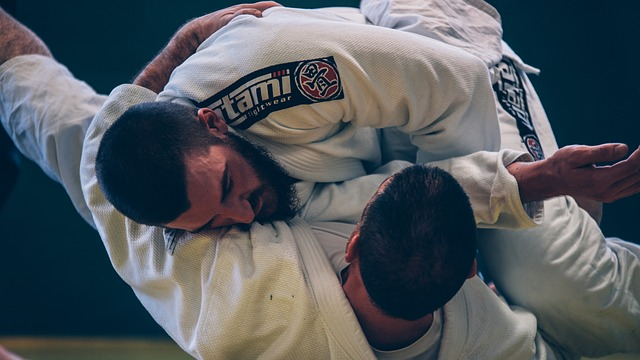
In the old-school UFC, submission switches and leg/arm attacks played a big role. But nowadays, everybody learns everything, so fighters know to roll out quickly of the armbar or a leg lock attempt. Yet, when you get a hold of the opponent’s neck, one late move and the fight is over. In the era of modern MMA, trapping the opponent’s back and stopping the blood flow to the brain is the most efficient way to score a submission victory.
The new research of Stellplug et al. (2022) researched the percentage of fight-ending chokes in an MMA fight. https://www.tandfonline.com/doi/abs/10.1080/00913847.2020.1866958 After studying every UFC event from 1993 to 2022, they concluded that of the 5834 fights analyzed, 1186 ended with a submission and 904 of those finishes were chokes.
I will show you the list of the ten most represented chokes in mixed martial arts with their percentage:
- In the old-school UFC, submission switches and leg/arm attacks played a significant role. But nowadays, everybody learns everything, so fighters know to roll out quickly of the armbar or a leg lock attempt. Yet, when you get a hold of the opponent’s neck, one late move and the fight is over. In the era of modern MMA, trapping the opponent’s back and stopping the blood flow to the brain is the most efficient way to score a submission victory.
The new research of Stellplug et al. (2022) researched the percentage of fight-ending chokes in an MMA fight. https://www.tandfonline.com/doi/abs/10.1080/00913847.2020.1866958 After studying every UFC event from 1993 to 2022, they concluded that of the 5834 fights analyzed, 1186 ended with a submission and 904 of those finishes were chokes.
I will show you the list of the ten most represented chokes in mixed martial arts with their percentage:
This list goes on and on. Yet, some chokes are impossible nowadays because fighters don’t wear gis. For example, you must get a hold of the opponent’s lapel to finish him via lapel or bow and arrow choke.
Yet, in the early stages of the UFC, there was no dress code, so don’t be surprised cause we discuss these ways to finish your opponent in combat sports.
Rear Naked Choke – Basic Submission Technique You See In Almost Every UFC Event
A rear-naked choke is the most often finish in the way of martial arts, especially when the opponent traps you into a body triangle. If a master of BJJ gets a hold of your back, you have two options – wait for the end of the round or test your luck and try to bridge your way out of the bad spot. Controlling the opponent’s hip is critical for a successful RNC finish too!
We see a rear-naked choke stoppage in almost every single UFC event. For example, Joe Solecki stopped Carl Deaton III in the preliminary fight in the dying seconds of round 2, despite Deaton being very close to surviving the round!
It is very hard to defend against a rear-naked choke on the mat, but you can visit high-quality grappling academy training and learn the correct position of your arms. The rear-naked choke works off the back, but an expert of this game can even transition from turtle position to the back mount and successfully end the fight.
There are also variations of this move – standing and sitting rear-naked chokes. But the one from the back is the most often.
Neck Crank – Will Strength Matter?

Sometimes the arm cannot go under the chin, because the opponent tilts it down to prevent the arteries. Yet, when the fighter on the back is way stronger than the opposite side, it happens! Take a look at the UFC 229 combat between Conor McGregor and Khabib Nurmagomedov – Khabib’s arm was on the Irishman’s chin, but the grip was too strong and it led to a finish!
How It Started: The History Of The Darce Choke
It kicked off with Joe D’arce, an American grappler and a representative of the Renzo Gracie academy from New York, who performed this amazing choke in Brazilian jiu jitsu competitions.
Yet, here is a confusing fact. People refer to Joe D’arce as the original creator of the finish, but some clues suggest that Darce choke might have its roots in Germany, from a luta livre competitor Björn Dag Lagerström. This movement is pretty much often in the UFC world, as you can perform it from numerous positions, in both gi and no gi combat.
Basic Darce Choke Setup
The easiest ways to place your arms correctly are when the opponent is in the turtle position or when he’s laying on his flank. This instructional video explains how to grab the opponent’s arm and squeeze properly under the opponent’s armpit for a successful D’Arce choke finish. The invention of Joe D’Arce can work from many different positions, even from north-south. You can threaten with a D’Arce choke from every single BJJ position when you’re a black belt or an experienced fighter.
D’Arce Choke From Bottom Side Control
I like to call it “an unexpected D’Arce choke”. The opponent will probably barrage you with punches and elbows, but he leaves his neck wide open, and this is your chance to escape from side control and apply the technique correctly.
Look at the video below. As soon as the fighter on the bottom could create space, he locked the guy on the top into a stunning D’Arce choke.
There is also a variation called Brabo choke which works from side control in a Brazilian jiu-jitsu gi fight too. Technically, Brabo choke could work without a gi, but you’ll have to improvise a bit.
How Does The Anaconda Choke Work?
You must lock your arms outside beside the training partner’s shoulders to perform the successful Anaconda choke. The best position to start is a front headlock or north-south, but feel free to experiment. You can switch from Darce choke to anaconda and vice versa when the opponent defends his neck, especially in jiu-jitsu combat because striking is not allowed.
Makwan Amirkhani is the real master of an anaconda choke in mixed martial arts. Enjoy his successful UFC finishes with the technique of Joe D’Arce in the video below.
The Anaconda Choke Vs. The Darce Choke: What’s The Difference?
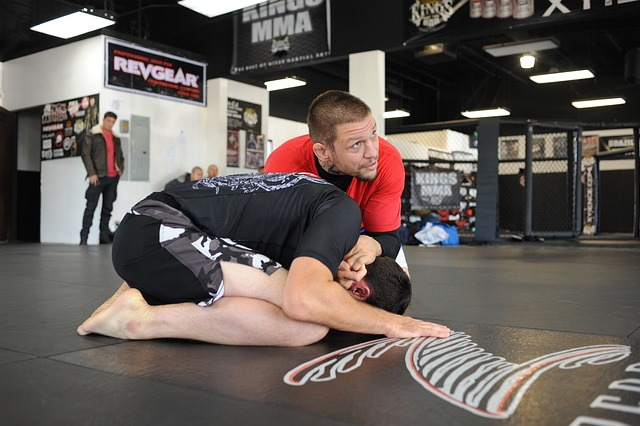
The D’Arce choke and anaconda choke are often confused because of their similarities. Even UFC commentators mix these two because of the bad camera angle and make corrections later.
Here is the critical difference – the positioning of the lock. For the successful D’Arce choke, you have to lock your arms beside the opponent’s neck, while in an anaconda choke, you will lock your arms outside beside the opponent’s shoulder.
Arm Triangle Choke And Best Positions To Get It
The best position for the arm triangle would be the top side control when the opponent is pressed towards the bottom with your shoulders.
When you’re dealing with a rocked opponent, it becomes way easier in mixed martial arts. For example, Islam Makhachev finished BJJ black belt, and the guy with the greatest number of submissions finishes in the UFC, Charles Oliveira, with this move after a brutal right hook counter knockdown to claim the lightweight title.
Technically, this can work from the top half guard when you trap your opponent’s leg or when he entangles your leg. Optionally, you can set it up from the top mount, but you have to press your opponent’s neck very hard and isolate the opponent’s arm; that’s why it works the best in martial arts when you’re on the side of your foe.
How Does The Cross-Choke Work?
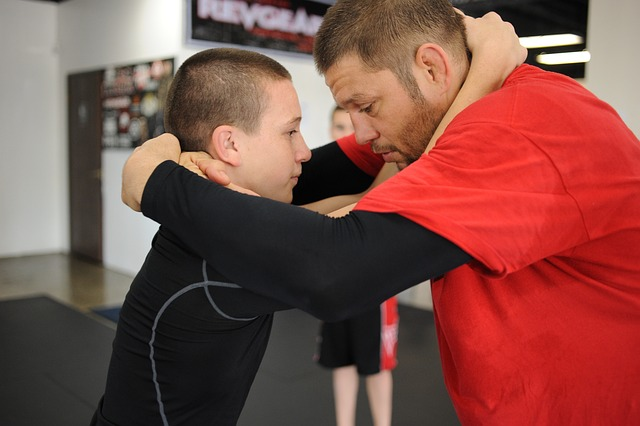
This submission cannot work these days in UFC or mixed martial arts because gi is not allowed. But it could do well in jiu-jitsu when you mount your opponent and get a hold of his gi by crossing your arms on the gi around his neck. Please take a look at the video below, it is very helpful. This can work in a Judo fight too.
How Does The BJJ Triangle Choke Function?
This was one of the most dangerous Brazilian jiu jitsu techniques in the early stages of the sport. Its power is real – Royce Gracie finished Dan Severn with a top-notch triangle despite Severn weighing 80+ pounds more. How is that even possible? The answer is – a perfect technique!
When the opponent is in your full guard, put one leg above his neck, and push your other leg under the opponent’s armpit, entangling your legs. Grab the opponent’s head and pull towards yourself to finish. To generate more pressure, you can grab your own leg for even more pressure. It works, even when your legs are short!
Inverted Triangle Choke – Does It Work?
Yes, of course, but you have to mount your opponent and risk a lot. Anybody with basic transition skills can evade this position while you’re trying to wrap your legs under his neck. If you’re willing to risk losing the position, give it a shot – the video tutorial is waiting for you below!
Ezekiel Choke
I will tell you one name – Aleksei Oleinik. “The Boa Constrictor” did the impossible by finishing Viktor Pesta with an Ezekiel choke off the bottom while being mounted. This submission is a trademark of BJJ and Sambo experts.
This video works well when you mount your opponent and get a hold of his neck, but a passionate specialist can apply it from the bottom because it works well in no-gi combat with a good grip too!
The Bow And Arrow Choke And The Best Position To Perform
Technically, this is not possible in MMA because you don’t have a gi. But once you control your opponent’s back, it is easy to get a hold of his lapel and finish him with this submission in a gi fight. A real master of the game can attempt it even from the open guard, but the best position is seated back control.
The Baseball Bat Choke And The Best Position To Perform It
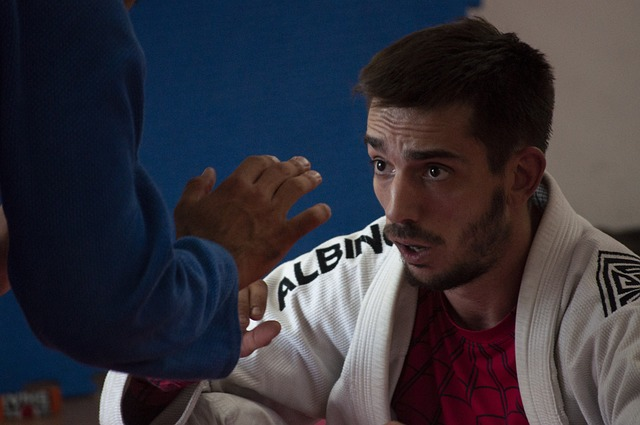
Another amazing technique for a Brazilian jiu-jitsu gi combat. Starting from the knee on the belly, transition to the north-south variation with your legs extended, holding your opponent’s gi, and crossing your arms to finish the fight. Yet, the baseball choke will hardly work in mixed martial arts, even in a no-gi match.
How Does The Guillotine Choke Work?
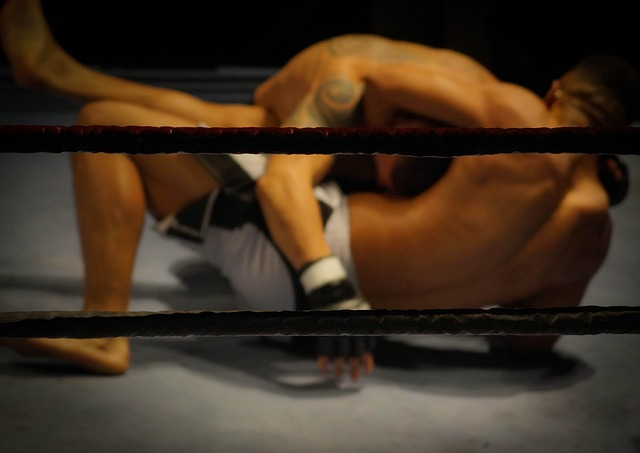
Svetozar Savov and Ryan Spann are the real masters of this move. You can do it from a standing position, but the best option is when the opponent’s neck is trapped while he’s in your full guard. Wrap and cross your legs around his back, push your hips up, place one arm under the neck, and squeeze your elbow to finish the submission. It is one of the most basic jiu-jitsu moves, which works nicely in all kinds of fights.
Arm-In Guillotine – When To Do It And How?
Instead of grabbing your elbow, cross your arms under the neck and press your opponent’s neck off the bottom as hard as you can. You can do this from the bottom position or when an enemy presses you against the cage.
This can work even if you don’t trap the opponent’s arm. You can also attempt it from a front headlock position, but you will have to make some adjustments.
Mounted Guillotine – Easier Or Harder?
It is harder to finish the opponent from here, as you’ll have to press his head towards you against the force of gravity. But this choke can work well both in an MMA and BJJ fight.
Plus you’ll have to lock him in 3/4 mount or full mount, which leaves many evading options available. If you gas out, your foe can sweep you.
A real example of this is the third round of the 145-pound title fight between Alexander Volkanovski and Brian Ortega. “Volk” didn’t even try to defend once Brian established a good grip, but after 30 seconds, the Mexican released the grip, and the Australian could slip out of the wrong spot.
How Does The Loop Choke Work?
To finish your foe with a loop choke, grab his lapel from the sitting front headlock, put your forearm under the opponent’s neck, and grab your elbow on the other side while pressing the back of his head towards the bottom. Not suitable for MMA combat, but it works well in jiu-jitsu or grappling. Please look at the instructional video below!
How Does The Paper Cutter Choke Work?
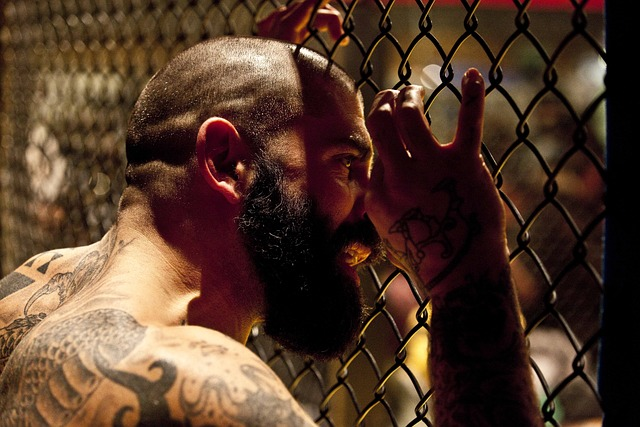
The instructional video below speaks more than a thousand words. And yeah, the paper cutter choke will work in a jiu-jitsu fight because you must grab the lapel and press from the side with your forearm.
Scarf Hold Choke
This could work well if you come from a Judo background, as osaekomi is the position that brings you victory when you hold your opponent for 20 seconds. But you must stop the blood flow by creating pressure on the neck.
I have to pinpoint the guy with 47 submission victories under his resume – Aleksei Oleinik again. He taught Jared Vanderaa a lesson with a tremendous scarf-hold choke. After trapping the arm, you must rotate and pull upwards. This works in jiu-jitsu too, it is even easier with a gi!
Shoulder Pressure
Sometimes you can get on top of your rival, place your knees around his waist, get a hold of his head, raise your buttocks off the ground, and apply pressure with your shoulder. This works very well against a beginner.
Ninja Choke
Another tricky choke from the closed guard. Wrap your arm under the neck, put the triceps of your opposite hand on the back of his head, grab your biceps, and squeeze for a successful ninja choke finish.
North South Choke
Isolate the opponent’s arm from the north-south position by trapping his arm and pressing his head to finish the fight via choke. It works in both jiu-jitsu and MMA fights.
Forearm Choke
Another pretty much useful move for beginners. All you have to do is press your rival on the bottom with the lateral side of your forearm. You can do it from the mount or side control. But it is a very risky move because the opponent can defend with a frame and create some space for the sweep attempt – better daze him with strikes first!
Bulldog Choke
This choke is the trademark of wrestlers, and it is pretty easy to defend for those who know to put the arm under the neck. It is also the trademark of street thugs and school bullies.
Yet, look on the bright side! Ben Askren made bulldog choke famous in his UFC 235 victory over Robbie Lawler, despite Robbie protesting the stoppage and many believing it was an early stoppage by Herb Dean!
Von Flue Choke
The Haitian 205-pound fighter Ovince Saint Preux is the master of Von Flue chokes. Made by Jason von Flue, this is the most excellent way to counter a guillotine choke attempt when your head is trapped on the outside. You only have to transition to the side control, put your chest on the foe’s chest, and press with your shoulder to stop the blood flow to his brain.
Special Chokes
Buggy choke is a modern-day submission that works well off the bottom, especially when the opponent is on top of you. If you know the technique, you’ll be able to finish the opponent from a very bad position! Another variation of this attack is a popular inverted buggy choke, but it is a bit harder to apply. But there is one downside – you need a lot of flexibility to apply this in a fight!
Pace choke (another name is Pillory choke) was seen for the first time in the bout between Nick Pace and Will Campuzano. Very technical move that requires a lot of training sessions.
Head and arm choke will work well when you enter the osaekomi position, but your opponent defends scarf hold well for some reason. Then you should trap his arm and pull him up and at the same time press with your chest to finish the match.
Are BJJ Chokes Dangerous?
All BJJ chokes could end the fight. These are the most dangerous BJJ submissions from closed to top half guard, top side control, and side control position. As I have already said, choose not to tap; you’ll be out in 9 seconds or less!
For the end of the article, look at the rarest BJJ submissions that have happened in the fastest-growing sports in the world! BJJ rocks if you know to use it well!
Frequently asked questions about BJJ chokes
What are the most common BJJ techniques used in MMA fights?
Some of the most common BJJ techniques used in MMA fights include the rear naked choke, neck crank, Darce choke, anaconda choke, arm triangle choke, cross-choke, triangle choke, and guillotine choke.
How does the rear naked choke work, and why is it so prevalent in UFC events?
The rear naked choke is a basic submission technique that isolates an opponent’s head and arm, applying pressure to the neck and cutting off blood flow to the brain. It’s prevalent in UFC events because it’s effective, relatively easy to execute, and can be applied from various positions.
What is the history of the Darce choke, and how is it set up?
The Darce choke, also known as the Brabo choke, was popularized by Joe D’Arce in the early 2000s. It’s a head-and-arm choke that involves trapping an opponent’s arm and head with your own arm, then applying pressure to the neck. The basic setup involves securing an underhook, threading your arm through the opponent’s armpit, and locking your hands together.
